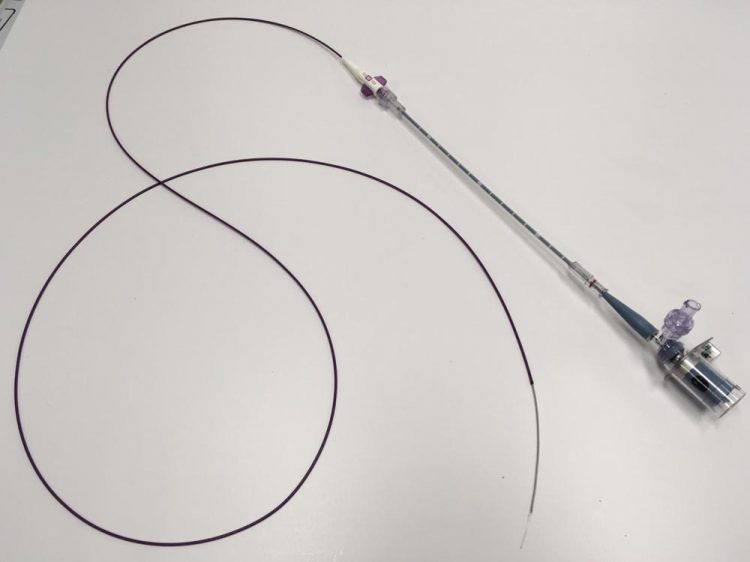New cardiac catheter combines light and ultrasound to measure plaques

Biomedical engineers at UC Davis have combined intravascular ultrasound with fluorescence lifetime imaging in a single catheter probe that can image the tiny arteries of a living heart. The new catheter can simultaneously retrieve structural and biochemical information about arterial plaque that could more reliably predict heart attacks. Credit: Marcu Lab/UC Davis
Professor Laura Marcu's lab in the Department of Biomedical Engineering at UC Davis has now combined intravascular ultrasound with fluorescence lifetime imaging (FLIm) in a single catheter probe that can image the tiny arteries of a living heart.
The new catheter can simultaneously retrieve structural and biochemical information about arterial plaque that could more reliably predict heart attacks.
The new device is described in a recent paper published in Scientific Reports.
An optical fiber in the catheter sends short laser pulses into surrounding tissue, which fluoresces with tiny flashes of light in return. Different kinds of tissue (collagen, proteins, lipids) emit different amounts of fluorescence.
At the same time, an ultrasound probe in the catheter records structural information about the blood vessel.
Seeking FDA Approval for Human Trials
The combination FLIm-IVUS imaging catheter provides a comprehensive insight into how atherosclerotic plaque forms, aiding diagnosis and providing a way to measure how plaques shrink in response to therapy.
The new catheter has been tested in living swine hearts and samples of human coronary arteries.
The catheter used in the study is flexible enough to access coronary arteries in a living human following standard procedures. It does not require any injected fluorescent tracers or any special modification of the catheterization procedures.
The new technique could not only can improve understanding of mechanisms behind plaque rupture – an event with fatal consequences- but also the diagnosis and treatment of patients with heart disease.
Marcu's group is currently working to obtain FDA approval to test this new intravascular technology on human patients.
Media Contact
All latest news from the category: Medical Engineering
The development of medical equipment, products and technical procedures is characterized by high research and development costs in a variety of fields related to the study of human medicine.
innovations-report provides informative and stimulating reports and articles on topics ranging from imaging processes, cell and tissue techniques, optical techniques, implants, orthopedic aids, clinical and medical office equipment, dialysis systems and x-ray/radiation monitoring devices to endoscopy, ultrasound, surgical techniques, and dental materials.
Newest articles

Webb captures top of iconic horsehead nebula in unprecedented detail
NASA’s James Webb Space Telescope has captured the sharpest infrared images to date of a zoomed-in portion of one of the most distinctive objects in our skies, the Horsehead Nebula….

Cost-effective, high-capacity, and cyclable lithium-ion battery cathodes
Charge-recharge cycling of lithium-superrich iron oxide, a cost-effective and high-capacity cathode for new-generation lithium-ion batteries, can be greatly improved by doping with readily available mineral elements. The energy capacity and…

Novel genetic plant regeneration approach
…without the application of phytohormones. Researchers develop a novel plant regeneration approach by modulating the expression of genes that control plant cell differentiation. For ages now, plants have been the…





















